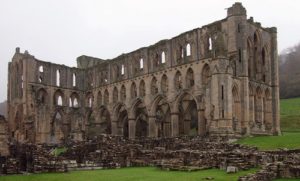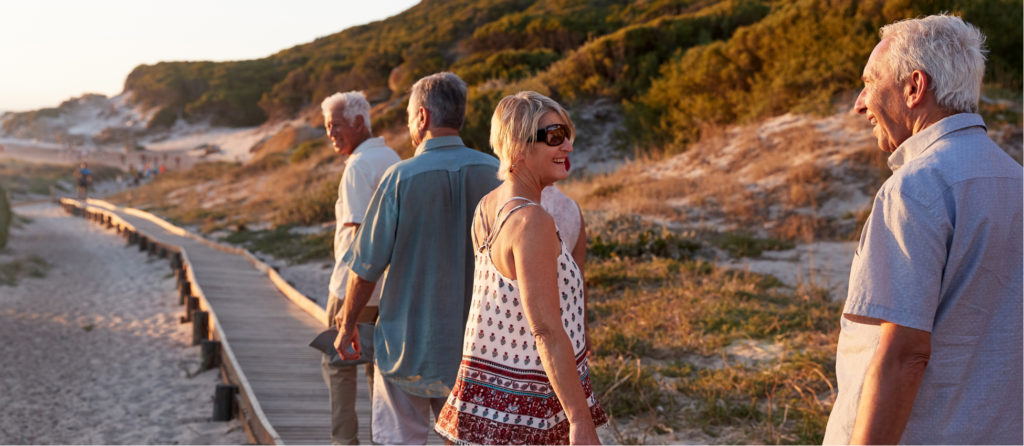The Cistercians knew how to pick their sites and Rievaulx Abbey is one of the best. It is a delightful setting on the River Rye and set against the steep wooded hillside. It is one of the most complete and best preserved of the great Yorkshire Abbeys and walking around the site it is possible to get an impression of the size and magnificence of the abbey.
The Abbey was founded in 1132 and was the first Cistercian Abbey in the north of England. It was intended as a base to spread the Christian message across the north of England and into Scotland. The remote location was ideal for the Cistercians who lead a simple life of prayer and self sufficiency with as little contact with the outside world as possible.
The original buildings were very simple, wooden structures and were soon replaced by more substantial stone structures. As the Abbey grew and became more wealthy the buildings were enlarged or replaced by more splendid buildings. Most of the buildings date from the 12th or 13th centuries although they were remodelled in the C14th. .
After the Dissolution of the Monasteries, Henry ordered the buildings to be stripped of lead and other valuables. The ruins passed into the hands of the Duncombe Family who were responsible for the building of the terraces above the river bank and the two Grecian style temples, now in the care of the National Trust.
The Abbey buildings have not been stripped for building stone and the chancel and transepts although roofless still stand to their original height with their soaring columns and lancet windows. The monk’s refectory building above the undercroft is still impressive with the remains of arcading and windows. The cloisters still have several of their columns with carved capitals.
It is possible to trace the remains of the other buildings like the chapter house with parlour and treasury next to it and abbot’s house beyond, from their foundations and remains of walls. The tall wall of the infirmary cloister still stands proud with its associated rooms off.
This is a delightful site, a lovely place to drop out in the sunshine and dream. There are plenty of seats around the site. There is a museum with information about the abbey and the monks, especially farming as well as archaeological finds from around the site. There is a small shop and tea room with good cakes.
DISABLED ACCESS
There is disabled parking bays in the main car park. There is also further parking inside the site gates but these have to be opened by a member of staff.
There is a wheelchair available for visitor use.
The Visitor Centre, shop and cafe are fully accessible as is the museum and there is a lift to the upper floor which takes wheelchairs but not scooters. There are disabled toilets.
There is a disabled route around the site which takes visitors round the outside of the buildings. There are steps into the chancel and refectory but a ramp into the cloisters. Access is well maintained lawns, bonded gravel and loose gravel paths. There is some signage warning of steep slopes. The area around the shop is cobbled.
There is a sensory garden by the museum and audio tours of the site. The site has permanent induction loops. Assistance dogs are welcome and carers are admitted free.








